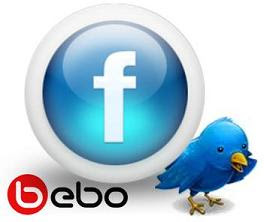 Last week Microsoft announced that it was ready to launch Windows Phone 7 - just in time for the 2010 holidays. And by the classic Microsoft playbook, Windows Phone 7's (re)emergence into the marketplace was going to be accompanied by serious moolah - a lot of it to the tune of at least $1,000,000,000 on the launch, half of it on marketing alone.
Last week Microsoft announced that it was ready to launch Windows Phone 7 - just in time for the 2010 holidays. And by the classic Microsoft playbook, Windows Phone 7's (re)emergence into the marketplace was going to be accompanied by serious moolah - a lot of it to the tune of at least $1,000,000,000 on the launch, half of it on marketing alone.Will Windows Phone 7 achieve the success Microsoft is looking for? I have my doubts. Microsoft dominates the desktop computer operating system market. It has done so for decades. And it is precisely this dominance in the desktop OS market that leads me to have my doubts.
Back in the '90s when PDA's still existed, I really enjoyed using my Palm V for all my appointments, contacts and note-taking. Thanks to PalmOS, the performance was really zippy, start up was quick, and battery life was good. I then tested the Compaq iPAQ which used Microsoft's Pocket PC operating system. My experience: slow boot up time, slower performance and shorter battery life. It was as if Microsoft was attempting to cram an entire desktop computer operating system into a tiny little PDA. Sure, the iPAQ could do a heckuva lot more than the Palm V could. But therein is the crux of the problem: a bloated one-size-fits-all OS (who the heck really used Excel on a PDA) versus an OS built for exactly the use case of the device.
Now I've never used a mobile device running Windows Mobile, so I can't personnaly comment on how this OS works compared to RIM, iPhone, Android, and PalmOS. But according to Millennial Media's MobileMix July 2010 report, Windows Mobile OS has a 4% marketshare of U.S. smartphones (a complete freefall compared with a 19.7% market share in October 2009).
So it would appear that Microsoft still struggles with producing a meaningful operating system for portable devices.
My point is that I'm not yet convinced that Microsoft's engineers are capable of producing a competitive operating system within a constrained form factor. Since the very beginning, Windows was all about including more and more features resulting in a resource-hungry, feature-bloated operating system.

I'm old enough to recall good ol' MS DOS which used to fit nicely on a single floppy disk. But with each "upgrade" to Microsoft Windows came the need to have it running on beefier and beefier hardware. More processor power, more RAM, more disk space, and more power. Windows 7's system requirements now include 1 to 2 GB of RAM and 16 GB of hard disk space - that's 16,000,000,000 bytes, or 13,000 of the old 5.25HD floppy disks which if laid end-to-end would equal a line over one mile long!
Earlier this summer, Microsoft CEO Steve Ballmer was quoted as saying that mobile devices are just like PCs in a different form factor. There are different ways of interpreting this statement. My interpretation is that Ballmer feels that mobile devices are just like desktop PCs but shrunken down to pocket size. I don't get any indication that there is any understanding in the halls of Redmond that mobile operating systems are fundamentally different than desktop operating systems.
In my opinion, for Windows Mobile 7 to be successful, there are three required elements:
- The OS kernel must be completely re-architected from the ground up for mobile devices, AND
- The chief architects of Mobile 7 must be completely new blood; not a single one of them should have ever worked on the Windows desktop operating system, AND
- The team must allowed to innovate - free from the internal politics, turf wars, and meddling hands of old-school executives (Mssrs. Gates and Ballmer included).
Only if Windows Mobile 7 can be cultivated in this Microsoft corporate contaminant-free environment will it be a success.
Can it be done? One word: Xbox. The Xbox team has been allowed to function semi-autonomously and the results are evident. According to Bloomberg, Xbox became the #1 U.S. game console last March.
Microsoft has proven they can do it...and can they do it again?
Your thoughts? Can they do it? Leave me your comments.








